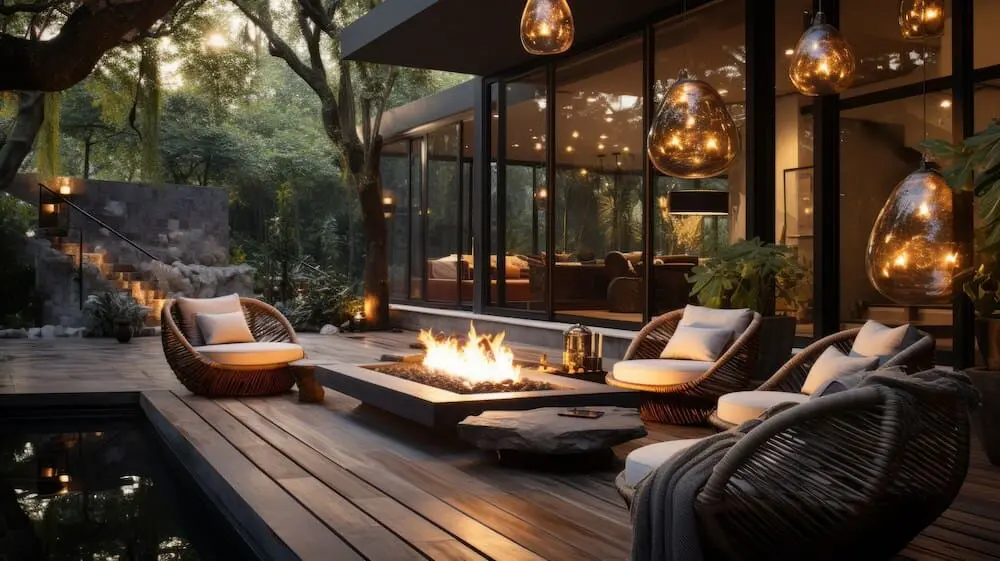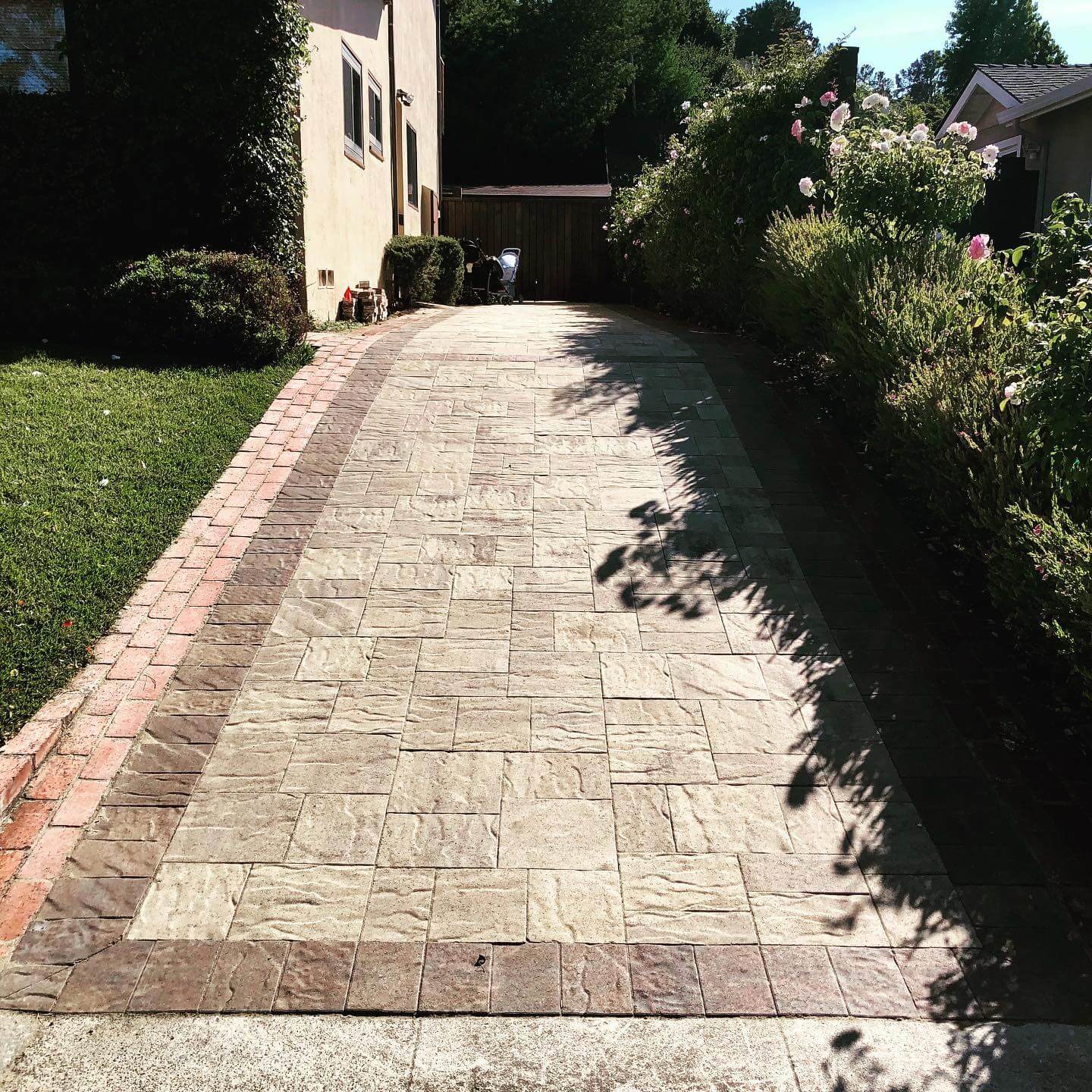
Fire Pits Use, Cleaning & Safety Measures
Operating the Fire Pits
- Start your fire level small and only use the certainly recommended fire starters. The use of gasoline as a fire starter is prohibited.
- In a wood-burning firepit, do not stack wood in the sky because you don’t want burning pills to pour out.
- Kids should not be allowed near fire pits, which adults should oversee all the time. Do not leave the fire unattended.
- Use screens or shields for protection from fast wind and to prevent sparks and flickers from flying out. Avoid using a fire pit when it is very airy.
Fire Pits Positioning
- Make sure your fire pits are set up well in a cross-ventilated area. Setting up firepits indoors or on a patio is not preferred.
- If you are setting up fire pits in a woody area or one with enough foliage, cut all low-hanging branches. They can probably catch on fire.
- Be careful of the surface material on which you are installing your fire pits. Do not put it straight on a wood deck; maintain the fire pit level so the flame is steady when lit.
Extinguish the Fire
- Make sure to put out the fire completely once you finish using it or leave it unattended. Follow the constructor’s instructions. You can use a fire extinguisher or water to let the hot coals or wood logs soak. Continue to sprinkle water over the fire until there’s no smoke.
- Once you put out the fire, cover it properly with a lid.
- Never store the coals or wood logs in bags right away after use. Metal ash buckets can be used instead.
Decorating the Fire Pits
Once you have explored the rules about cautiously using fire pits, it’s time for creating the decoration for the aura and complexion you want.
- If you feast at the campfire event, surrounding the fire pit with large rocks randomly laid around it and mounting firewood would be great. Add simple chairs for seating.
- Create bare-bones decor: Use a lowered area covered with gravel for the fire pit with little uplifted, built-in wooden benches surrounding it. This would be great for late-night enjoyment.
- For a luxurious look, use large limestone boulders to surround a stack of gravel with a fire pit in the center.
Using Lava Rocks For Fire Pits
Lava rocks are simple to maintain and give your fire pits a clean, lavish, and contemporary look. Assemble a layer of 3-4 inches of lava rock within your fire pit bowl. Then ply it with wood, if that is your propellant. If you are using gas, the whole fire pit can be packed with lava rock or at least cover the fire ring. Even lava rock can shatter when heated to its full due to moisture getting bounded inside. Ensure to be careful the first time you use the fire pit after rain or after installation
Even with the best caution of using lava rock to vanish the heat, concrete fire pits can develop thin cracks due to warming and cooling. And while these cracks and fissures are not always bonny, they are not mortal flaws in your fire pit, which has been streamed with special wire meshing to keep it functionally safe. To reduce the risk of these cracks, try not to burn large, hot wood logs.
Learn About Outdoor Design & Remodeling Services
How To Clean Fire Pits
Cleaning and washing methods depend on the material type of your firepit. Here are a few steps on how to clean the steel, copper, cast iron, gas, and brick fire pits.
Steel or copper fire pits
- Clear all the ashes and waste from the inside of the fire pit. You should wait for a day to ensure the fire has gone out and the ember has cooled.
- Use hot, lathery water and a soft cloth to clean the inside of the pit.
- Wash out the soap and then dry the pit thoroughly. Leaving water drops can cause the metal to rust and erode.
Cast iron fire pits
- Discard all the ash and waste from the fire pit after use.
- Always use hot water and steel wool to clean the interior of the bowl.
- Thoroughly dry clean the pit with a soft cloth to avoid rusting.
Brick or stone fire pits
- Get rid of all the ash and refuse from the fire pit after use.
- Rub the brick/stone with hot, soapy water or detergent and a brush.
- Soak it.
- Keep it vacant to dry completely before use.
Gas fire pits
- Discard any debris such as leaves or sand from the exterior.
- Use a cloth and soapy water to sponge the sides.
- Dry it off with a soft woolen cloth.
Using your firePits
- Use well-seasoned dry wood to reduce fumes and smoke, or use charcoal instead.
- Make a fire with plenty of wood logs or charcoal and burn for at least half an hour before you want to use it because the first half hour burns more smoke.
- Preferably, leave an hour before cooking to allow ashes to form. You can divide the bigger logs to one side so that you can keep your fire blowing over while you cook over the ashes.
- If you are not in the hustle to cook, add charcoal to the fire once it’s blowing.
- Some racks are not designed to be left over sharp flames for long periods. Leave these over the ashes once you’re ready to cook.
- The cooking accessories are usually treated with oil to protect them from overheating before use. Heat the product over the fire before you use and rinse it well. After every time you use it, rub over a little cooking oil after rinsing and drying. If any rusting occurs, clean it off with a brush, and rub it over with oil.
- After cooking detach the rack, load more logs, and enjoy the heat and coziness of the fire.
FirePits Maintenance
Your brand new fire pit is well designed to be low maintenance and can be kept outdoors all seasons around. Taking care of your fire pit will help to increase its lifespan. Here are a few simple things to keep your fire pit in good working order and will help extend its life:
- A fire pit can develop an even rusty glaze. This will not alter its functionality much or durability but if you like, you can clean it up with a brush and then rub oil to keep it working smoothly.
- Keep your fire pit covered and shielded from the elements like lids when leaving it unattended. This is particularly important for cast iron, steel, and copper firepits. Heavy rain can cause it to corrode.
- Fire pit-covered lid will protect the bowl and keeps the base of clinkers and burnt wood dry for use. It also works as a sneezer to extinguish the tire protectively.
- If you don’t want to cover it with a lid, clean out your fire pit completely after use, and make sure the raised disc in the bottom of the fire bowl is clear of ashes, to pause rainwater collecting.
- Don’t soak the fire with water to blow it. Let it burn down naturally. The quick drop in temperature can cause the pit to smash.
- Clean out the ash and dirt every time you use it and give it a deep cleaning every three to six months.
- Never use accelerants as the extreme heat can harm the pit
- Oil the steel fire pit around two times a month
- Do not burn plastic in the pit as the burnt plastic will stick to its pan.
How To Make a FirePits More Efficient?
There are many ways you can take to make your fire pit more efficient and durable:
- Using long-serving or kiln-dried wood, a process of dehydrating wood until it holds as little moisture as possible. Kiln-dried wood burns more efficiently with less smoke and you can buy it ready-made or make it yourself from your home or garden stores.
- Use sand or lava rocks as protection from extreme heat damage and harm with time. The bottom of your hanged fire pit may deteriorate from heat damage, so placing a bottom layer of sand or lava rocks can create a shield and make it durable.
- Always keep it dry and clean as this will avoid you from burning an old fire pit waste. It protects from tarnishing and corrosion and keeps whatever wood is burning dry.
- Always light it from the middle as heat rises. A matchbox or firelighter in the bottom-middle of your fire pit should spread the flames and heat evenly and smoothly.
- Never use flammable liquids to lit the firepits. It is a huge safety risk, to use lighter fluid or other combustible liquids to light a fire pit as it can damage the pit itself and the surroundings.
- Ensure the fire has plenty of oxygen as your fire won’t last long without a balanced flow of oxygen.
Learn About Our Outdoor Design & Remodeling Services
Leaving a FirePit Burning Overnight
This would be a simpler choice, but it is also unsafe. Even a tiny ash can cause a whole backyard fire, especially during dry weather. There are several other options to ensure that you can enjoy the warmth and aura of a backyard fire but also can safely put out the fire. All you need to do is little planning, line up, and some supplies.
You don’t want to hurry up the process of blowing out a fire or leave it as a last-minute job. Then stop adding fuel to the fire about an hour before you are setting up to leave the space. This will cause the fire to blow out naturally, making it easier to be dead. Use a spoon or a stick to spread out fiery logs or coals. It will help accelerate the process of putting out the fire. If the large blocks of wood or coals are spread out and not affected, they will not carry as much heat and reduce the chances of reigniting the fire.
Fire Pits Tips
- If you are using burning gas, ensure that the fire ring and flames are never closer than 3-4 inches from any side to reduce surface breaches.
- When fixing the fire ring, cover the top surface with more lava rock up to the top of the pit to conceal the lava ring.
- Grab the gas line through the bottom of the fire bowl and place the on/off valve close to the fire pit for easy use.
- For a traditional look, fix the fire ring with the holes pointing downward. This also helps keep dirt and dust from blocking the holes and openings in your fire ring.
FirePits Safety Measures
While enjoying a fire pit is great, it is also important to make sure safety is a prime concern:
- Look after children all the time when the fire is lit as the steel gets hotter.
- Setting a fire pit on brick, gravel, stone, concrete, or slab on the decking keeps it safe from rusting and marks as it ages. A fire pit can get scorched when placed directly on the grass.
- Keep the firepit away from any inflammable things.
- Keep your water supply at hand in case you need to dampen the fire.
- Always use protective things especially gloves when handling BBQ.
- Always make sure the firepit is properly covered when leaving it unattended.
- Ensure the fire bowl can drain quickly, so it doesn’t fill with water and clear out quickly.
- Do not burn anything without a protective layer of lava rock on the firepit bottom. In the case of burning wood place a layer of lava rock 3-4 inches deep and then place firewood on the lava rock. For gas fires, Cover the fire ring properly with lava rock.
- Never use rock or gravel instead of lava rock as it can explode when overheated.
- Always keep a fire extinguisher at hand.
- Gasoline is dangerous and can be the cause of explosions. Never use gasoline as a starting material.
- Keep the firepit at least 10 feet away from surrounding landscaping.
- Arrange a proper gas connection.





